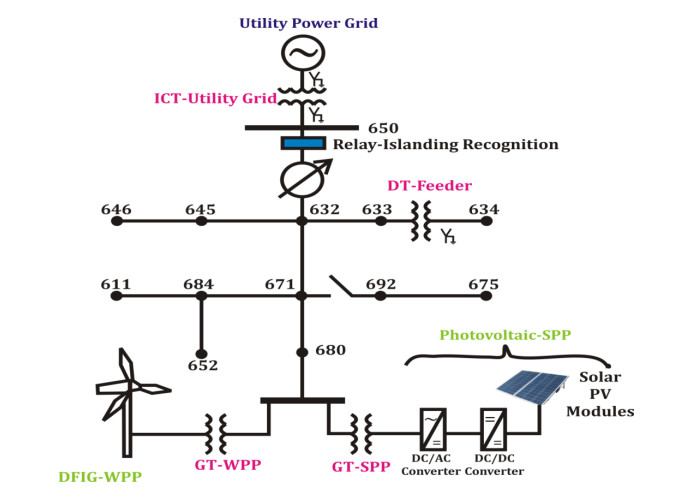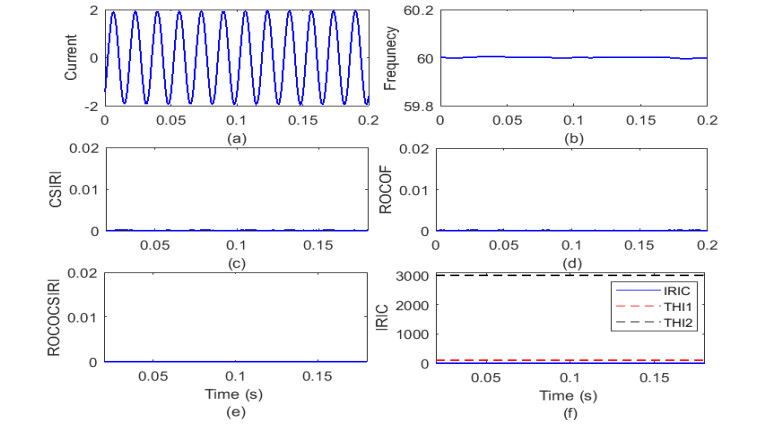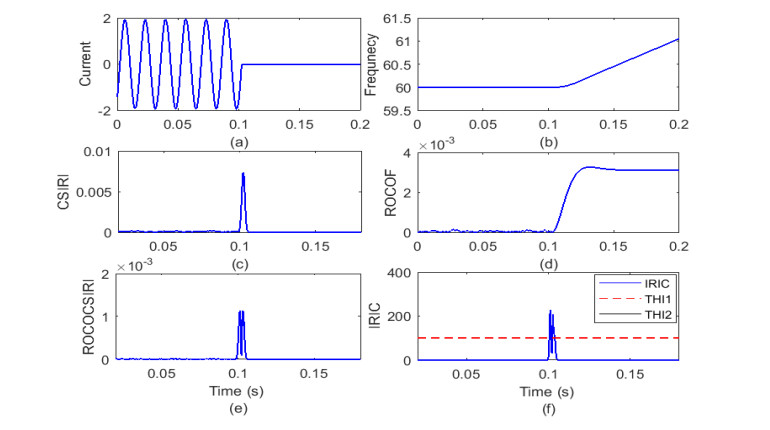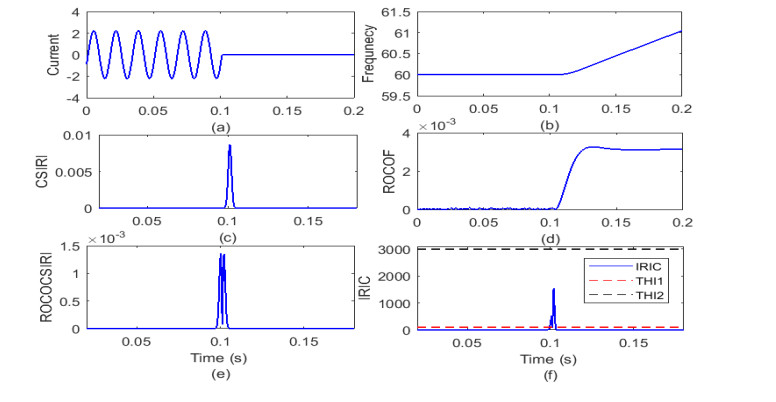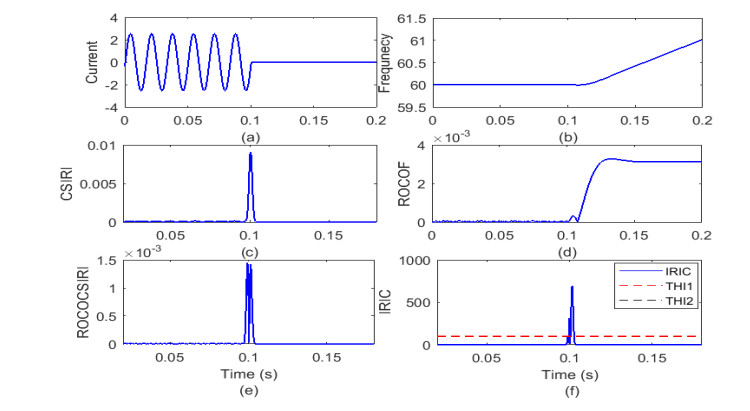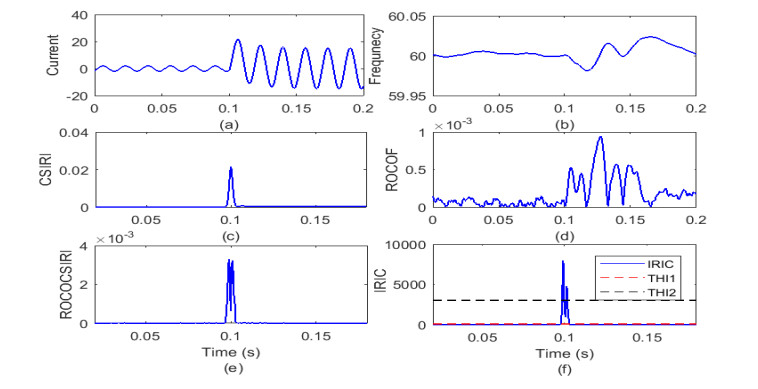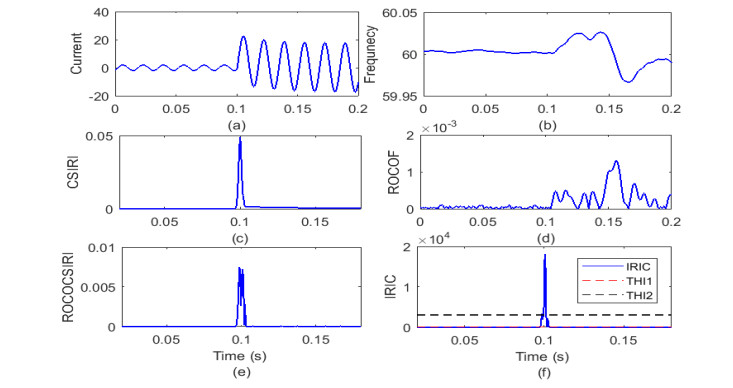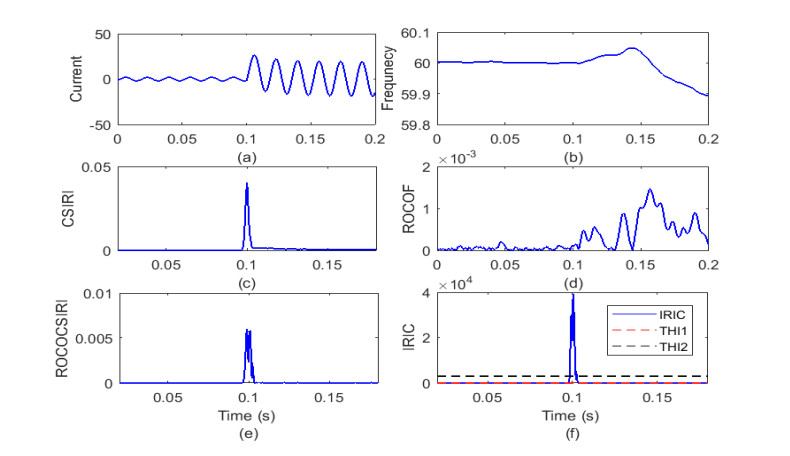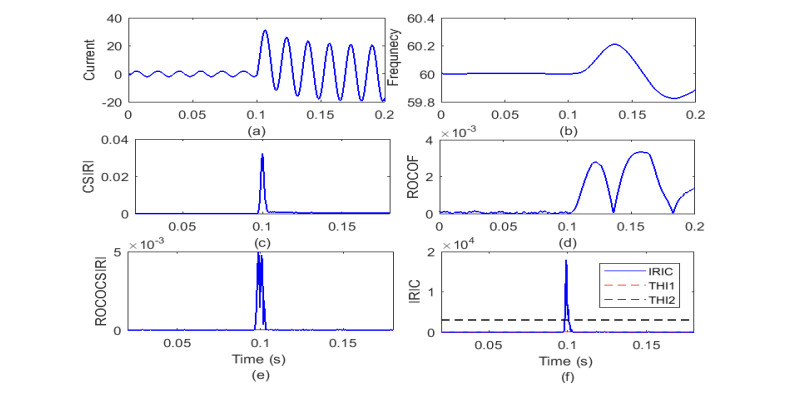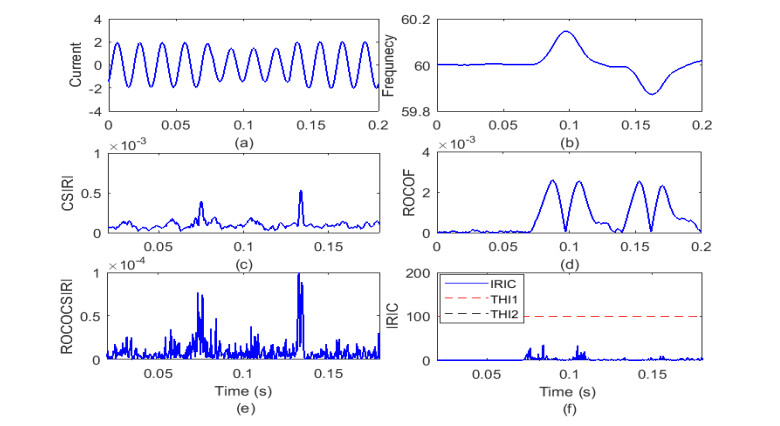1.
Introduction
The notion of a somewhere dense set was introduced in [1,2] as a new type of a wider class of open sets in general topology. More properties of this concept were investigated in [3,4,5]. In 2016, El-Shafei et al. [6] applied this notion to supra topologies [7] under the name of supra R-open sets. In 2008, Thangaraj [8] applied this concept to classical fuzzy topology.
In 1999, Molodtsov [9], introduced the notion of soft sets as a generalization of crisp sets and fuzzy sets. In 2011, Shabir and Naz [10] applied the conditions of classical topology to the category of soft sets, to define soft topology, which was investigated in [11]. Many kinds of weaker forms of soft open sets were introduced, such as oft regular and soft T2 topological spaces [12], soft semi- (respectively, pre-, α-, β-) open sets [13], soft b-open sets [14], weakly soft β-open sets [15], soft pre-open sets inspired by classical topologies [16], and weakly soft b-open [17] sets.
In 2018, Al-Shami [18] presented the notion of somewhere dense and cs-dense sets in soft topological spaces to generalize the previous weaker forms of soft open sets. He showed that the collection of soft somewhere dense sets fails to form a supra topology, because the null soft set does not satisfy the definition. After that, these notions were applied to different types of soft functions [19], soft open functions and soft Baire spaces [20], soft continuity and soft Baire spaces [21,22], and soft connectedness [23]. The soft ideal notion was first introduced in [24]. This notion is used to generalize many topological properties such as soft compactness [25], soft connectedness [26], soft continuity [27], soft models [28], soft semi local functions [29], soft generalized open sets [30,31,32], generalized soft rough sets [33], and soft separation axioms [34].
In 2014, El-Sheikh and Abd El-latif [35] applied the conditions of a supra topological space to soft set theory. The new class was named the supra soft topological space, which is wider than the soft topology by eliminating the condition of finite soft intersection. As expected, it has attracted many authors to introduce many valued topological properties to such spaces, such as supra soft locally closed sets [36], supra soft b-open sets [37], supra soft δi-open sets [38], supra soft (strongly) generalized closed sets [39,40], supra soft separation axioms [41,42], supra soft regular open sets [43], and the Baire categories of soft sets [44].
In this paper, we continue studying more properties in supra soft topological spaces. Specifically, we define a new concept of supra soft open sets named supra soft sd-sets. We show that the new family of supra soft sd-sets contains almost all the previous weaker forms of supra soft open sets, which have been studied in previous papers [35,37,43]. Moreover, the concept of a supra soft sc-set is introduced. Furthermore, we define new types of soft operators related to the supra soft sd-sets and supra soft sc-sets and discuss many of their interesting properties. In addition, many examples and counterexamples are provided. Finally, some expected applications in our upcoming projects are explored.
2.
Preliminaries
Let (K,Λ) be a soft set over U. Henceforth, the class of all soft sets will be denoted by S(U)Λ. Also, a soft topological space and supra soft topological space will be denoted by STS and SSTS, respectively. Let (U,μ,Λ) be an SSTS, and the classes of supra soft pre- (respectively, b-, β-, α-, semi-, regular-) open sets will denoted by POSs(U) (respectively, BOSs(U)Λ, βOSs(U)Λ, αOSs(U)Λ, SOSs(U)Λ, ROSs(U)Λ).
Definition 2.1. [9] A pair (K,Λ), denoted by KΛ, over the set of parameters Λ and the initial universe U, is called a soft set, which is defined by
Definition 2.2. [10] The collection τ⊆S(U)Λ is called a soft topology on U if
(1) ˜U,˜φ∈τ, where ˜U(λ)=U and ˜φ(λ)=φ, for all λ∈Λ.
(2) The soft union of arbitrary elements of τ belongs to τ.
(3) The soft intersection of finite elements of τ belongs to τ.
The triplet (U,τ,Λ) is called an STS over U. Also, the elements of τ are called soft open sets, and their soft complements are called soft closed sets.
Definition 2.3. [10] Let (U,τ,Λ) be an STS and (K,Λ)∈S(U)Λ. The soft closure of (K,Λ), denoted by cl(K,Λ), is the smallest soft closed superset of (K,Λ).
Definition 2.4. [11] The soft interior of (G,Λ) in an STS (U,τ,Λ), denoted by int(G,Λ), is the largest soft open subset of (G,Λ).
Definition 2.5. [10,45] The soft set (G,Λ)∈S(U)Λ is called a soft point in ˜U, denoted by uλ, if there are u∈U and λ∈Λ such that G(λ)={u} and G(λ′)=φ for each λ′∈Λ−{λ}. Also, uλ˜∈(F,Λ), if for the element λ∈Λ, G(λ)⊆F(λ).
Definition 2.6 [35] The collection μ⊆S(U)Λ is called a supra soft topology (or SSTS) on U if
(1) ˜U,˜φ∈μ.
(2) The soft union of arbitrary elements of μ belongs to μ.
The elements of μ are called supra soft open sets, and their soft complements are called supra soft closed sets.
Definition 2.7. [35] Let (U,τ,Λ) be an STS and (U,μ,Λ) be an SSTS. We say that μ is an SSTS associated with τ if τ⊂μ.
Definition 2.8. [35] Let (U,μ,Λ) be an SSTS and (K,Λ)∈S(U)Λ. Then, the supra soft interior of (G,Λ), denoted by ints(G,Λ), is the largest supra soft open subset of (G,Λ). Also, the supra soft closure of (K,Λ), denoted by cls(K,Λ), is the smallest supra closed soft superset of (K,Λ).
Definition 2.9. [35] A soft function fpu:(U1,τ1,Λ1)→(U2,τ2,Λ2) with μ1 as an associated SSTS with τ1 is said to be supra soft continuous if f−1pu(G,Λ2)∈μ1∀(G,Λ2)∈τ2.
3.
Supra soft sd-sets and relationships
In this section, a new class of supra soft open sets named the supra soft sd-set is introduced, and its properties are studied in detail. With the support of examples, we found that the new collection is wider than almost all the weaker forms of subsets of SSTS. Theses relationships are summarized in a diagram (Figure 1). Also, the complement of the supra soft sd-set is presented under the name of supra soft sc-set, and many of its important properties are presented, with the help of many examples.
Definition 3.1. Let (U,μ,Λ) be an SSTS and (K,Λ)∈S(U)Λ. Then, (K,Λ) is called a supra soft somewhere dense set (briefly, supra soft sd-set) if there is ˜φ≠(O,Λ)∈μ such that
The soft complement of a supra soft sd-set is said to be a supra soft sc-set. The family of all supra soft sd-sets (respectively, supra soft sc-sets) will denoted by SD(U)Λ (respectively, SC(U)Λ).
Theorem 3.2. Let (U,μ,Λ) be an SSTS and (G,Λ)∈S(U)Λ. Then, (K,Λ)∈SD(U)Λ if and only if ints(cls(K,Λ))≠˜φ.
Proof. Necessity: Suppose that (K,Λ)∈SD(U)Λ. So,
Hence,
Therefore,
Sufficient: Assume that ints(cls(K,Λ))≠˜φ, and then cls(K,Λ)≠˜φ. Now, for uλ˜∈ints(cls(K,Λ)) and (Nuλ,Λ) being any supra soft neighborhood for the soft point uλ, we have
Hence,
and ints(cls(K,Λ)) is a non-null supra soft open set containing uλ. This means
Therefore, (K,Λ)∈SD(U)Λ.
Corollary 3.3. Let (U,μ,Λ) be an SSTS and (K,Λ)∈S(U)Λ. If (K,Λ)∈SD(U)Λ. Then, there is ˜φ≠(O,Λ)∈μ such that (O,Λ)˜⊆cls(K,Λ).
Proof. Suppose that (K,Λ)∈SD(U)Λ. So,
Hence,
Lemma 3.4. A soft subset (J,Λ) of an SSTS (U,μ,Λ) is a supra soft sd-set if and only cls(J,Λ) is a supra soft sd-set.
Proof. Direct from Corollary 3.3.
Corollary 3.5. Every soft superset of a supra soft sd-set is a supra soft sd-set.
Proof. Obvious from Theorem 3.2.
Remark 3.6. The following example will show that the converse of the above corollary is not true in general.
Example 3.7. Assume that U={u1,u2,u3,u4}. Let Λ={λ1,λ2} be the set of parameters. Let (Ai,Λ),i=1,2,...,7, be soft sets over U, where
A1(λ1)={u1,u2},A1(λ2)={u1},
A2(λ1)={u1},A2(λ2)=φ,
A3(λ1)={u1,u2},A3(λ2)={u3,u4},
A4(λ1)={u3,u4},A4(λ2)={u1,u2},
A5(λ1)={u1,u3,u4},A5(λ2)={u1,u2},
A6(λ1)=U,A6(λ2)={u1,u2},
A7(λ1)={u1,u2},A7(λ2)={u1,u3,u4}.
Then, μ={˜U,˜φ,(Ai,Λ),i=1,2,...,7} defines an SSTS on U. Hence, the soft set (Y,Λ), where
Y(λ1)={u2,u3},Y(λ2)={u3,u4} is a supra soft sd-set, since
ints(cls(Y,Λ))={(λ1,{u3,u4}),(λ2,{u1,u2})}≠˜φ. At the same time, we have that (W,Λ)˜⊆(Y,Λ), where
W(λ1)={u2},W(λ2)={u3,u4},
is not a supra soft sd-set on U, since ints(cls(W,Λ))=˜φ.
Definition 3.8. A soft subset (N,Λ) of an SSTS (U,μ,Λ) is called a supra soft nowhere dense set if ints(cls(K,Λ))=˜φ.
Remark 3.9. Let (U,μ,Λ) be an SSTS and (K,Λ)∈S(U)Λ. If (K,Λ) is not a supra soft sd-set. Then, it is supra soft nowhere dense.
Theorem 3.10. Let (U,μ,Λ) be an SSTS and (G,Λ)∈S(U)Λ. Then, (K,Λ)∈SC(U)Λ if, and only if, there is a proper supra soft closed subset (H,Λ) of ˜U such that ints(K,Λ)˜⊆(H,Λ).
Proof. Necessity: Suppose that (K,Λ)∈SC(U)Λ. Then,
From Corollary 3.3, there is ˜φ≠(O,Λ)∈μ such that (O,Λ)˜⊆cls(K˜c,Λ). So,
Hence,
Sufficient: Assume that there is a proper supra soft closed subset (H,Λ) of ˜U such that ints(K,Λ)˜⊆(H,Λ). Then,
and (H˜c,Λ) is a proper supra soft open subset of ˜U. Therefore, (K˜c,Λ)∈SD(U)Λ. It follows that, (K,Λ)∈SC(U)Λ.
The proof of the next corollary is obvious from Theorem 3.10.
Corollary 3.11. Every soft subset of a supra soft sc-set is a supra soft sc-set, but not conversely, as shown in the next example.
Example 3.12. Consider the SSTS in Example 3.7. For the soft sets (A,Λ), (B,Λ), where
A(λ1)={u1,u4},A(λ2)={u1,u2},
B(λ1)={u1,u3,u4},B(λ2)={u1,u2}.
We have (A,Λ)˜⊆(B,Λ), and (A,Λ) is a supra soft sc-set, when (B,Λ) is not a supra soft sc-set.
Lemma 3.13. If (N,Λ)∈SD(U)Λ and (M,Λ)∈S(U)Λ such that (N,Λ)˜∩(M,Λ)=˜φ, then (M,Λ)∈SC(U)Λ.
Proof. Suppose that (N,Λ)˜∩(M,Λ)=˜φ such that (N,Λ)∈SD(U)Λ and (M,Λ)∈S(U)Λ. It follows that,
From Corollary 3.11, (M,Λ)∈SC(U)Λ.
Proposition 3.14. A soft subset (L,Λ) of an SSTS (U,μ,Λ) is either a supra soft sd-set or a supra soft sc-set.
Proof. Suppose (L,Λ)˜⊆˜U such that (L,Λ)∉SD(U)Λ. So, the supra soft closure of (L,Λ) has a null supra soft interior. It follows that,
and so
[cls(L,Λ)]˜c is non-null supra soft open. Therefore,
Remark 3.15. Every supra soft regular open set is a supra soft open set, proved in [43]. Also, in [37], the authors proved that every supra soft (respectively, α, semi-, pre-, b-) open set is supra soft β-open. Now, we shall prove that, all of them are supra soft sd-sets.
Theorem 3.16. Every supra soft β-open set is a supra soft sd-set.
Proof. Assume that, (R,Λ) is a supra soft β-open. Then,
Hence,
Therefore, (R,Λ) is a supra soft sd-set.
Remark 3.17. The converse of Theorem 3.16 is not true in general, as confirmed in the next example.
Example 3.18. Consider the SSTS in Example 3.7. For the soft set (S,Λ) where
S(λ1)={u2,u3,u4},S(λ2)=U,
is a supra soft sd-set on U, since ints(cls(S,Λ))={(λ1,{u3,u4}),(λ2,{u1,u2})}≠˜φ. On the other side, (S,Λ)˜⊈cls(ints(cls(S,Λ)))={(λ1,{u3,u4}),(λ2,{u1,u2})}. Thus, (S,Λ) is not supra soft β-open.
Corollary 3.19. Depending on the above arguments, we can get the following implications for an SSTS (U,μ,Λ), which are not reversible.
Lemma 3.20. If (M,Λ) and (N,Λ) are non-null disjoint supra soft open subsets of an SSTS (U,μ,Λ). Then, (M,Λ) and (N,Λ) are both supra soft sd-sets and supra soft sc-sets.
Proof. Suppose that (N,Λ)˜∩(M,Λ)=˜φ such that (M,Λ),(N,Λ)∈μ. It follows that,
So,
Similarly, (M,Λ)∈μ follows (M,Λ)∈SD(U)Λ, and so (N˜c,Λ)∈SD(U)Λ from Corollary 3.5.
Definition 3.21. An SSTS (U,μ,Λ) is supra soft disconnected if there is a proper soft subset of ˜U which is supra soft open and supra soft closed.
Proposition 3.22. Every soft point of a supra soft disconnected space (U,μ,Λ) is a supra soft sc-set.
Proof. Immediate from Theorem 3.10 and Definition 3.21.
Proposition 3.23. Every supra soft neighborhood of any soft point uλ in (U,μ,Λ) is a supra soft sd-set.
Proof. Suppose (S,Λ) is a supra soft neighborhood of a soft point uλ. It follows that,
Hence,
Thus, (S,Λ)∈SD(U)Λ.
Remark 3.24. The converse of the above-mentioned proposition is not true in general. Consider the SSTS in Example 3.7. For the soft set (C,Λ), where
C(λ1)={u2},C(λ2)={u1,u3},
is a supra soft sd-set, but it is not a supra soft neighborhood for any soft point in ˜U.
Theorem 3.25. (1) An arbitrary soft union of supra soft sd-subsets of an SSTS (U,μ,Λ) is a supra soft sd-set.
(2) An arbitrary soft intersection of supra soft sc-subsets of an SSTS (U,μ,Λ) is a supra soft sc-set.
Proof.
(1)Let {(Aϵ,Λ),ϵ∈ε}⊆SD(U)Λ. Then,
Thus,
Hence,
(2) Obvious from (1).
Remark 3.26. (1) A finite soft intersection of supra soft sd-subsets of an SSTS (U,μ,Λ) need not be a supra soft sd-set.
(2) A finite soft union of supra soft sc-subsets of an SSTS (U,μ,Λ) need not be a supra soft sc-set.
The next example shall confirm our claim.
Example 3.27. Consider the SSTS in Example 3.7. For the soft sets (M,Λ),(N,Λ), where
M(λ1)={u2,u3},M(λ2)={u3,u4},
N(λ1)={u2,u4},N(λ2)={u1,u2},
we have that both (M,Λ) and (N,Λ) are supra soft sd-sets, but their soft intersection (M,Λ)˜∩(N,Λ)={(λ1,{u2}),(λ2,φ)} is not a supra soft sd-set.
Also, for the soft sets (H,Λ),(K,Λ), where
H(λ1)={u1,u3},H(λ2)=U,
K(λ1)={u4},K(λ2)={u3,u4},
we have that both (H,Λ) and (K,Λ) are supra soft sc-sets, but their soft union (H,Λ)˜∪(K,Λ)={(λ1,{u1,u3,u4}),(λ2,U)} is not a supra soft sc-set.
Corollary 3.28. From the above arguments, we can conclude that the collection of supra soft sd-sets fail to form an SSTS, because the null soft set does not satisfy the definition.
4.
New supra soft operators via supra soft sd-sets
This section is devoted to present new soft operators named the supra soft sd-closure operator, supra soft sd-cluster operator, and supra soft sd-interior operator. We characterize many of their interesting properties in detail, supported by examples. Furthermore, we prove that the property of being a supra soft sd-set is a supra soft topological property.
Definition 4.1. The supra soft sd-interior points of a soft subset (G,Λ) of an SSTS (U,μ,Λ), denoted by intssd(G,Λ), is the largest supra soft sd-subset of (G,Λ).
Remark 4.2. The supra soft sd-interior points of a soft set is not always supra soft sd-set, as shown in the following example.
Example 4.3. Assume that U={u1,u2,u3}. Let Λ={λ1,λ2} be the set of parameters. Let (Ki,Λ),i=1,2,3,4, be soft sets over U, where
K1(λ1)={u1,u2},K1(λ2)={u1,u3},
K2(λ1)={u1},K2(λ2)=φ,
K3(λ1)={u2},K3(λ2)={u1,u3},
K4(λ1)={u1},K4(λ2)={u1}.
Then, μ={˜U,˜φ,(Ki,Λ),i=1,2,3,4} defines an SSTS on U. So, for the soft set (J,Λ), where
J(λ1)=φ,Y(λ2)={u2},
we have intssd(J,Λ)=˜φ∉SD(U)Λ.
Lemma 4.4. For a soft subset (K,Λ) of an SSTS (U,μ,Λ), the following statements hold:
(1) There is (J,Λ)∈ SD(U)Λ such that uλ˜∈(J,Λ)˜⊆(K,Λ), whereas, uλ˜∈(K,Λ) ⇔ (K,Λ)∈ SD(U)Λ.
(2) intssd(K,Λ)=(K,Λ)⇔ (K,Λ) is a non-null supra soft sd-set.
(3) ints(K,Λ)˜⊆intssd(K,Λ).
Proof.
(1) Let uλ˜∈(K,Λ). If there is (J,Λ)∈ SD(U)Λ such that uλ˜∈(J,Λ)˜⊆(K,Λ). Then, (K,Λ)∈SD(U)Λ from Corollary 3.5. Conversely, if (K,Λ)∈SD(U)Λ. Then, (K,Λ)≠˜φ from Definition 3.1. It follows that, there is a soft point uλ contained in (K,Λ) in which uλ˜∈(K,Λ)˜⊆(K,Λ).
(2) Direct from Definition 4.1.
(3) Assume that uλ˜∈ints(K,Λ), and then there is (G,Λ)∈ μ such that uλ˜∈(G,Λ)˜⊆(K,Λ). It follows that,
From (1), (K,Λ)∈ SD(U)Λ. From (2), intssd(K,Λ)=(K,Λ). Thus, uλ˜∈intssd(K,Λ).
Theorem 4.5. Let (U,μ,Λ) be an SSTS and (Y,Λ),(Z,Λ)∈S(U)Λ. Then,
(1) intssd(˜U)=˜U and intssd(˜φ)=˜φ.
(2) intssd(Y,Λ)˜⊆(Y,Λ).
(3) intssd(intssd(Y,Λ))=intssd(Y,Λ).
(4) If (Y,Λ)˜⊆(Z,Λ). Then, intssd(Y,Λ)˜⊆intssd(Z,Λ).
(5) intssd[(Y,Λ)˜∩(Z,Λ)]˜⊆intssd(Y,Λ)˜∩intssd(Z,Λ).
(6) intssd(Y,Λ)˜∪intssd(Z,Λ)˜⊆intssd[(Y,Λ)˜∪(Z,Λ)].
Proof.
(1) Immediate.
(2) and (3) Follows from Definition 4.1.
(4) Suppose that uλ˜∈intssd(Y,Λ). Then,
Since (Y,Λ)˜⊆(Z,Λ), uλ˜∈(E,Λ)˜⊆(Y,Λ)˜⊆(Z,Λ). Hence, uλ˜∈intssd(Z,Λ).
(5) and (6) Follows from (4).
Remark 4.6. The following examples will confirm that, the inclusions of parts (2), (4)–(6) in Theorem 4.5 are proper.
Examples 4.7. In Example 4.3,
(1) We have (J,Λ)˜⊈intssd(J,Λ)=˜φ.
(2) For the soft set (J,Λ), we have
(3) For the soft sets (A,Λ) and (B,Λ), where
A(λ1)={u1,u3},A(λ2)={u2},
B(λ1)={u3},B(λ2)={u1,u2}, we have
(4) For the soft sets (J,Λ) and (K2,Λ), we have
Definition 4.8. The supra soft sd-closure points of a soft subset (H,Λ) of an SSTS (U,μ,Λ), denoted by clssd(H,Λ), is the smallest supra soft sc-superset of (H,Λ).
Remark 4.9. The supra soft sd-closure points of a soft set is not always a supra soft sc-set. In Example 4.3, we have clssd(K1,Λ)=˜U∉SC(U)Λ.
Theorem 4.10. Let (N,Λ) be a soft subset of an SSTS (U,μ,Λ). Then, uλ˜∈clssd(N,Λ) ⇔ for each supra soft sd-set (O,Λ) containing uλ, (N,Λ)˜∩(O,Λ)≠˜φ.
Proof. Necessity: Suppose conversely that there is a supra soft sd-subset (O,Λ) of ˜U containing uλ such that (N,Λ)˜∩(O,Λ)=˜φ. Then,
Hence,
Therefore,
Sufficient: Assume conversely that uλ˜∉clssd(N,Λ), and so there is a supra soft sc-set (V,Λ) such that uλ˜∉(V,Λ) and (N,Λ)˜⊆(V,Λ). Hence,
where (K˜c,Λ) is a supra soft sd-set, which is a contradiction with the condition.
Corollary 4.11. If (N,Λ)∈SD(U)Λ and (M,Λ)∈S(U)Λ such that (N,Λ)˜∩(M,Λ)=˜φ. Then, (N,Λ)˜∩clssd(M,Λ)=˜φ.
Proof. Follows from Lemma 3.13 and Theorem 4.10.
Proposition 4.12. For a soft subset (H,Λ) of an SSTS (U,μ,Λ), the following statements hold:
(1) clssd(H,Λ)=(H,Λ)⇔ (H,Λ) is a proper supra soft sc-set.
(2) clssd(H,Λ)˜⊆cls(H,Λ).
Proof.
(1) Follows from Definition 4.8.
(2) Assume that uλ˜∉cls(H,Λ). Then, there is (G,Λ)∈ μ containing uλ such that (H,Λ)˜∩(G,Λ)=˜φ. It follows that, (G,Λ)∈SD(U)Λ containing uλ such that (H,Λ)˜∩(G,Λ)=˜φ. From Theorem 4.10, uλ˜∉clssd(H,Λ).
Theorem 4.13. For a soft subset (T,Λ) of an SSTS (U,μ,Λ), we have
Proof. Suppose that uλ˜∉[intssd(T,Λ)]˜c. Then, uλ˜∈intssd(T,Λ). It follows that,
Hence,
This means that
Now, assume that uλ˜∉clssd(T˜c,Λ). From Theorem 4.10,
It follows that,
Therefore,
Therefore,
From Eqs (4.1) and (4.2), clssd(T˜c,Λ)=[intssd(T,Λ)]˜c.
Corollary 4.14. For a soft subset (T,Λ) of an SSTS (U,μ,Λ), we have
Proof. Follows from Theorem 4.13.
Theorem 4.15. Let (U,μ,Λ) be an SSTS and (C,Λ),(D,Λ)∈S(U)Λ. Then,
(1) clssd(˜φ)=˜φ and clssd(˜U)=˜U.
(2) (C,Λ)˜⊆clssd(C,Λ).
(3) clssd(clssd(C,Λ))=clssd(C,Λ).
(4) If (C,Λ)˜⊆(D,Λ), then clssd(C,Λ)˜⊆clssd(D,Λ).
(5) clssd[(C,Λ)˜∩(D,Λ)]˜⊆clssd(C,Λ)˜∩clssd(D,Λ).
(6) clssd(C,Λ)˜∪clssd(D,Λ)˜⊆clssd[(C,Λ)˜∪(D,Λ)].
Proof.
(1) Immediate.
(2) and (3) Follows from Definition 4.8.
(4) Suppose that uλ˜∈clssd(C,Λ). Then, for each supra soft sd-set (O,Λ) containing uλ,
Since (C,Λ)˜⊆(D,Λ), (D,Λ)˜∩(O,Λ)≠˜φ. Hence, uλ˜∈clssd(D,Λ).
(5) and (6) Follows from (4).
Remark 4.16. The following examples will confirm that, the inclusions of parts (2), (4)–(6) in Theorem 4.15 are proper.
Examples 4.17. In Example 4.3,
(1) We have clssd(K1,Λ)=˜U˜⊈(K1,Λ).
(2) For the soft sets (M,Λ) and (N,Λ), where
M(λ1)={u1,u2},M(λ2)=U,
N(λ1)={u3},N(λ2)={u1,u2}, we have
(3) For the soft sets (R,Λ) and (M,Λ), where
R(λ1)={u1,u3},R(λ2)={u2},
M(λ1)={u1,u2},M(λ2)=U, we have
(4) clssd[(K3,Λ)˜∪(K2,Λ)]=clssd(K1,Λ)=˜U˜⊈clssd(K3,Λ)˜∪clssd(K2,Λ)=(K1,Λ).
Definition 4.18. A soft point sλ is said to be a supra soft sd-cluster point of a soft subset (C,Λ) of an SSTS (U,μ,Λ) if for each supra soft sd-set (G,Λ) containing sλ,
The set of all supra soft sd-cluster points of (C,Λ), denoted by dssd(C,Λ), is called a supra soft sd-derived set.
Proposition 4.19. For a soft subset (C,Λ) of an SSTS (U,μ,Λ), dssd(C,Λ)˜⊆ds(C,Λ).
Proof. Suppose that sλ˜∉ds(C,Λ). Then, there is (G,Λ)∈ μ containing sλ such that [(C,Λ)∖sλ]˜∩(G,Λ)=˜φ. It follows that, (G,Λ)∈SD(U)Λ containing sλ such that [(C,Λ)∖sλ]˜∩(G,Λ)=˜φ. Hence, sλ˜∉dsd(C,Λ).
Theorem 4.20. Let (U,μ,Λ) be an SSTS and (C,Λ),(D,Λ)∈S(U)Λ. Then,
(1) dssd(C,Λ)˜⊆(C,Λ)⇔(C,Λ) is a proper supra soft sc-set.
(2) If (C,Λ)˜⊆(D,Λ). Then, dssd(C,Λ)˜⊆dssd(D,Λ).
(3) dssd[(C,Λ)˜∩(D,Λ)]˜⊆dssd(C,Λ)˜∩dssd(D,Λ).
(4) dssd(C,Λ)˜∪dssd(D,Λ)˜⊆dssd[(C,Λ)˜∪(D,Λ)].
Proof.
(1) (⇒) Assume that (C,Λ) is a proper soft set such that sλ˜∉(C,Λ). Since dssd(C,Λ)˜⊆(C,Λ), sλ˜∉dssd(C,Λ). Hence, there is (G,Λ)∈SD(U)Λ containing sλ such that [(G,Λ)∖sλ]˜∩(C,Λ)=˜φ. Since sλ˜∉(C,Λ), (G,Λ)˜∩(C,Λ)=˜φ. Therefore, (G,Λ)˜⊆(C˜c,Λ). It follows that, (C˜c,Λ) is the soft union of supra soft sd-sets. Thus, (C,Λ) is a proper supra soft sc-set.
(⇐) Let (C,Λ) be a proper supra soft sc-set such that sλ˜∉(C,Λ). It follows that, sλ˜∈(C˜c,Λ), (C˜c,Λ)∈SD(U)Λ. Now, (C,Λ)˜∩[(C˜c,Λ)∖sλ]=˜φ, (C˜c,Λ)∈SD(U)Λ. Hence, sλ˜∉dssd(C,Λ). Therefore, dssd(C,Λ)˜⊆(C,Λ).
(2)–(4) Obvious from Definition 4.18.
Remark 4.21. The reverse inclusions of parts (2)–(4) in Theorem 4.20 are not satisfied in general, as declared in the next examples.
Examples 4.22. In Example 4.3,
(1) For the soft sets (Y,Λ) and (Z,Λ), where
Y(λ1)={u1,u3},Y(λ2)={u2},
Z(λ1)={u1,u2},Z(λ2)=U, we have
dssd(Y,Λ)={(λ1,{u3}),(λ2,{u2})}˜⊆dssd(Z,Λ)={(λ1,{u2,u3}),(λ2,U)}, whereas (Y,Λ)˜⊈(Z,Λ).
(2) For the soft sets (V,Λ), (K3,Λ), where
V(λ1)=φ,V(λ2)={u2}, we have
dssd(V,Λ)˜∩dssd(K3,Λ)={(λ1,{u3}),(λ2,{u2})}˜⊈dssd[(V,Λ)˜∩(K3,Λ)]=˜φ.
(3) For the soft sets (Y,Λ), (K1,Λ), where
Y(λ1)={u1,u3},Y(λ2)={u2}, we have
dssd[(Y,Λ)˜∪(K1,Λ)]=˜U˜⊈dssd(Y,Λ)˜∪dssd(K1,Λ)={(λ1,{u1,u3}),(λ2,U)}.
Definition 4.23. A soft function fpu:(U1,τ1,Λ1)→(U2,τ2,Λ2) with μ1 and μ1 associated SSTSs with τ1 and τ2, respectively, is said to be supra soft open if
Also, fpu is said to be a supra soft bicontinuous function if it is both supra soft continuous and a supra soft open function.
Theorem 4.24. The image of every supra soft sd-set under a supra soft bicontinuous function is a supra soft sd-set.
Proof. Assume that (E,Λ1) is a supra soft sd-subset of ~U1 and fpu:(U1,τ1,Λ1)→(U2,τ2,Λ2) is a supra soft bicontinuous function. Then,
It follows that,
Since fpu is a supra soft open function, fpu(G,Λ1)∈μ2. Thus,
Corollary 4.25. The property of being a supra soft sd-set is a supra soft topological property.
Proof. Obvious from Theorem 4.24.
5.
Conclusions
Our paper is devoted to generalizing many types of supra soft open sets, like supra soft semi- (respectively, regular-, β-, α-, pre-, b-) open sets. We showed that, the new category of supra soft sd-sets contains almost all the previous weaker forms of supra soft open subsets of an SSTS. We discussed many of their interesting properties in detail, supported by many examples. These examples showed that our introduced results are true and proper. Finally, the concepts of the supra soft sd-interior operator, supra soft sd-cluster operator, and supra soft sd-closure operator were presented.
Mashhour et al. [7], in 1983, introduced the notion of supra topology to generalize the general topology notion. Alpers [46], in 2002, showed that these new spaces were easier in application. The application of these spaces in real-life problems was introduced in 2016 by Kozae et al. [47]. New rough set operators and models via these spaces were provided in 2022 by Al-shami and Alshammari [48]. The notion of supra soft topological space was defined in 2014 by El-Sheikh and Abd El-latif [35]. Therefore, our coming project will be as follows:
● Investigating more properties of the mentioned operators and introducing more types of new soft operators and soft continuity via supra soft sd-sets to generalize such notions in [49,50].
● The soft compactness and soft connectedness via these new notions will be presented.
● Using our new above-mentioned classes to develop the accuracy measures of subsets in information systems to generalize such notions in [51].
● Presenting applications for these approaches in real-life problems to investigate what is in [47].
● Introducing new soft rough set operators and models via the above-mentioned notions.
Use of AI tools declaration
The author declares he has not used Artificial Intelligence (AI) tools in the creation of this article.
Acknowledgments
The author is extremely grateful to the anonymous referees for their valuable suggestions which helped to improve the presentation of the paper.
The authors extend their appreciation to the Deanship of Scientific Research at Northern Border University, Arar, KSA for funding this research work through the project number "NBU-FPEJ-2024-2727-01".
Conflict of interest
The author declares no conflicts of interest.










 DownLoad:
DownLoad:


